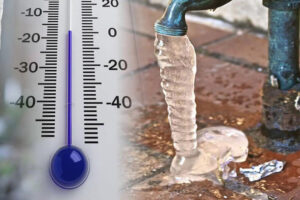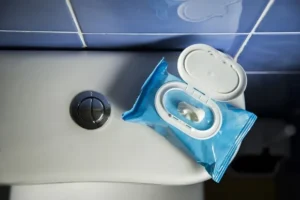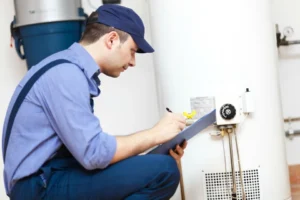Water heaters provide a source of hot water for our hygiene needs. Thus, you should maintain your water heater and ensure it operates within its capacity and ability. However, issues that arise in your water heater system can inconvenience you and your family members when you most need a steady supply of clean hot water.
Here are five signs that can help you identify and eliminate potential problems.
1. Discolored Water
Discolored water can signify water heater failure, as the built-in anode rod may fail to eliminate rust. An anode rod is a steel wire that contains additional materials like magnesium and aluminum, which help limit corrosion in tank water heaters. Water contaminated by corrosion can damage your appliances and is unsafe for personal use.
To check if the water heater is the issue and not your plumbing, pour a glass of cold water and compare it to a glass of hot water. Clarity in the cold water glass compared to murky water in the hot one confirms that the issue resides in the water heater.
In this case, you can drain the tank. But if that’s unsuccessful, replace the anode rod. Based on your house’s water quality and rate of use, you should replace the anode rod every three to five years.
2. Strange Noises
Strange noises can range from taps, clunks, bangs, or knocks, which may result from sediment buildup that tears tiny gaps in the metal. These noises indicate a need for a tank flush. Crackles or hisses indicate moisture accumulation in a gas water heater or an obstruction in an electric tank.
Finally, whistles or high-pitched screeches relate to pressure adjustments in the tank. These noises warn you that you should assess your temperature and pressure valves.
3. Foul Odors
Foul odors indicate that it is time to check the unit, as sulfur bacteria can build up in the tank and generate an unpleasant rotten egg smell. Drain the tank and raise the water temperature temporarily to dissuade sulfur bacteria contamination. Alternatively, you can replace the magnesium anode with a different metal.
4. Leaks
The temperature variations during the water heater’s lifespan cause the metallic components to expand and contract from repeated use. With time, this expansion and contraction can cause the metal to crack and leak, especially in older tank heaters.
Other mechanical factors, like loose pipes and screws, can create a significant gap for leaks. If you notice any puddles near the heater when in use, it clearly indicates that the water heater has developed a leak.
5. Inconsistent Water Temperature
If your hot water does not stay heated for long enough or is only hot some of the time, it may highlight that the thermostat or heating element of the water heater has malfunctioned. Have a licensed plumber come in and inspect the situation further.
A professional can determine whether the issue is due to a faulty thermostat, heating element, or any other component in the system which they can replace.
However, the issue could also be tank size and the current volume cannot fully satisfy your house’s hot water usage. In this case, the best option is to upgrade your tank volume. For example, a 50-gallon tank can satisfy a family with more than three family members.
6. Age
A water heater that exceeds 10 years has likely outlived its useful lifespan and requires replacement. Check the serial code on the manufacturer’s sticker to determine the age of your water heater.
This code is an alphanumeric sequence that starts with a letter followed by several digits. The first two numbers indicate the manufacture year. Invest in a new, more efficient model if you want to replace an old water heater.
Contact us at A -1 Affordable Plumbing Inc for plumbing repairs, maintenance, and installations.









